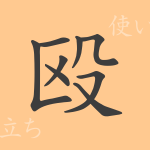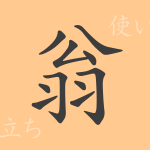“
The cherry blossom flowers that adorn the breath of spring continue to captivate many with their ephemeral beauty. In Japan, cherry blossoms hold a particularly important position as a symbol of culture and identity, influencing numerous literary works and arts since ancient times. In this article, we will delve into the allure of cherry blossoms, from their origin to their meaning, usage, and reading.
The Origin (Etymology) of 桜 (Sakura)
There are various theories about the etymology of the word 桜 (Sakura), but it is said that in ancient times, the words “”さくや”” (Sakuya) and “”さくら”” (Sakura) were used to refer to flowers. “”さくや”” (Sakuya) can be interpreted as “”咲く夜”” (Saku yoru), meaning “”the night when flowers bloom,”” which may come from the idea that cherry blossoms reach their peak bloom at night. Additionally, “”さくら”” (Sakura) is considered to be the imperative form of “”さける”” (Sakeru), meaning “”to bloom,”” and is thought to be a word expressing the wish for flowers to bloom.
The Meaning and Usage of 桜 (Sakura)
In Japan, cherry blossoms are known as a symbol of the arrival of spring. They are also seen as flowers that symbolize the transience and ephemeral nature of life, as they bloom beautifully but quickly scatter. Cherry blossoms are often seen at milestones such as graduation ceremonies and entrance ceremonies, and are frequently used in scenes that symbolize new beginnings and farewells.
Reading, Stroke Count, and Radical of 桜 (Sakura)
The kanji for cherry blossom has distinctive features in its shape and sound.
- Reading: On’yomi “”おう”” (ō), Kun’yomi “”さくら”” (Sakura)
- Stroke Count: 16 strokes
- Radical: 木部 (Kihen, tree radical)
Idioms, Phrases, and Proverbs Using 桜 ( Sakura) and Their Meanings
Words using cherry blossoms are often used in Japanese to express beauty and ephemeral nature. For example, “”桜花爛漫”” (ōkaranman) describes the stunning sight of cherry blossoms in full bloom, symbolizing excitement and splendor. “”夜桜お七”” (Yozakura- o-shichi) refers to a sad love story that took place under the cherry blossoms at night, linking the beauty of cherry blossoms with the sorrow of life.
Summary of 桜 (Sakura)
Cherry blossoms have captured the hearts of Japanese people with their beauty and transience, influencing many aspects of culture and tradition. Blooming in full with the arrival of spring, cherry blossoms are deeply rooted in Japanese life as a symbol of new beginnings and endings. Idioms and proverbs featuring cherry blossoms illustrate the richness of the Japanese language, expressing the diverse meanings and emotions associated with cherry blossoms. Cherry blossoms are more than just flowers; they can be said to be an embodiment of Japanese aesthetics and philosophy.
“

























